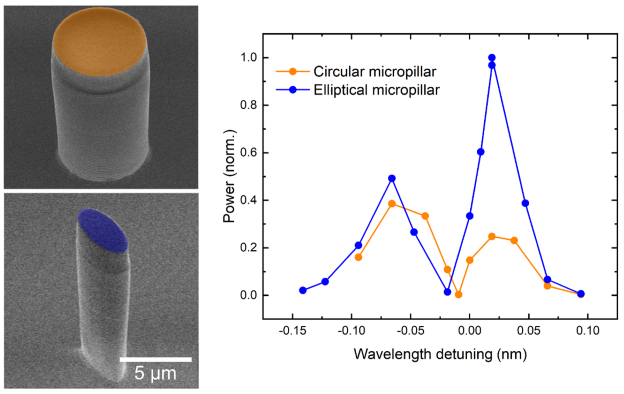Harvesting Coherent Hypersound With Elliptical Micropillars | CPT PPP Coverage
Cryptopolytech (CPT) Public Press Pass (PPP)
News of the Day COVERAGE
200000048 – World Newser
•| #World |•| #Online |•| #Media |•| #Outlet |
View more Headlines & Breaking News here, as covered by cryptopolytech.com
Harvesting Coherent Hypersound With Elliptical Micropillars appeared on www.azonano.com by .
Scientists have harnessed elliptical micropillars to enhance the generation and detection of coherent acoustic phonons in the gigahertz range. This advancement represents a significant step forward in the development of more efficient nanoacoustic transducers.
Controlling hypersound at the nanoscale has long been a significant challenge in the field of nanophononics. The absence of a standard transducer for the gigahertz-terahertz frequency range mainly relies on the use of all-optical techniques for the efficient generation and detection of acoustic waves. Addressing this issue could revolutionize the development of optophononic technologies, with promising applications in quantum communication and data processing.
Micropillar microcavity optophononic resonators, which confine both light and sound within the same region, have shown great potential in enhancing light-matter interactions. In an optophononic cavity, tuning the laser wavelength to resonate with the cavity maximizes acoustic phonon generation. However, the optimal sensitivity for detection occurs when the laser is slightly detuned from the optical resonance, at the slope of the optical reflectivity. A major roadblock has been that these optimal wavelengths for phonon generation and detection do not coincide.
In a significant advancement, a team of researchers at the Centre de Nanosciences et de Nanotechnologies – C2N (CNRS, Université Paris-Saclay) led by Dr.Daniel Lanzillotti-Kimura, have utilized micropillars with elliptical cross-sections to achieve optimal conditions for both phonon generation and detection. This approach lifts the degeneracy of the optical cavity, resulting in two optical modes at slightly different wavelengths with orthogonal polarizations. By employing excitation and detection beams with orthogonal polarizations, one beam couples to one optical mode while the other beam automatically couples to the other mode. When the excitation beam is tuned to resonate with its respective mode, the detection beam aligns with the slope of the other mode due to the energy split between the two modes. This configuration simultaneously enhances both the generation and detection
of coherent acoustic phonons.
“Our findings represent a significant step forward in nanophononics,” said Chushuang Xiang, the first author of the study. “Our method offers a more efficient way to control high-frequency acoustic waves at the nanoscale, paving the way for advanced optophononic devices.”, completes. One notable advantage of micropillars is their integrability with other solid-state systems. “This advancement promises to impact various fields, including high-speed communication systems and quantum technologies,” Dr.Lanzillotti-Kimura concluded.
Source:
French National Centre for Scientific Research
FEATURED ‘News of the Day’, as reported by public domain newswires.
View ALL Headlines & Breaking News here.
Source Information (if available)
This article originally appeared on www.azonano.com by – sharing via newswires in the public domain, repeatedly. News articles have become eerily similar to manufacturer descriptions.
We will happily entertain any content removal requests, simply reach out to us. In the interim, please perform due diligence and place any content you deem “privileged” behind a subscription and/or paywall.
CPT (CryptoPolyTech) PPP (Public Press Pass) Coverage features stories and headlines you may not otherwise see due to the manipulation of mass media.
First to share? If share image does not populate, please close the share box & re-open or reload page to load the image, Thanks!



